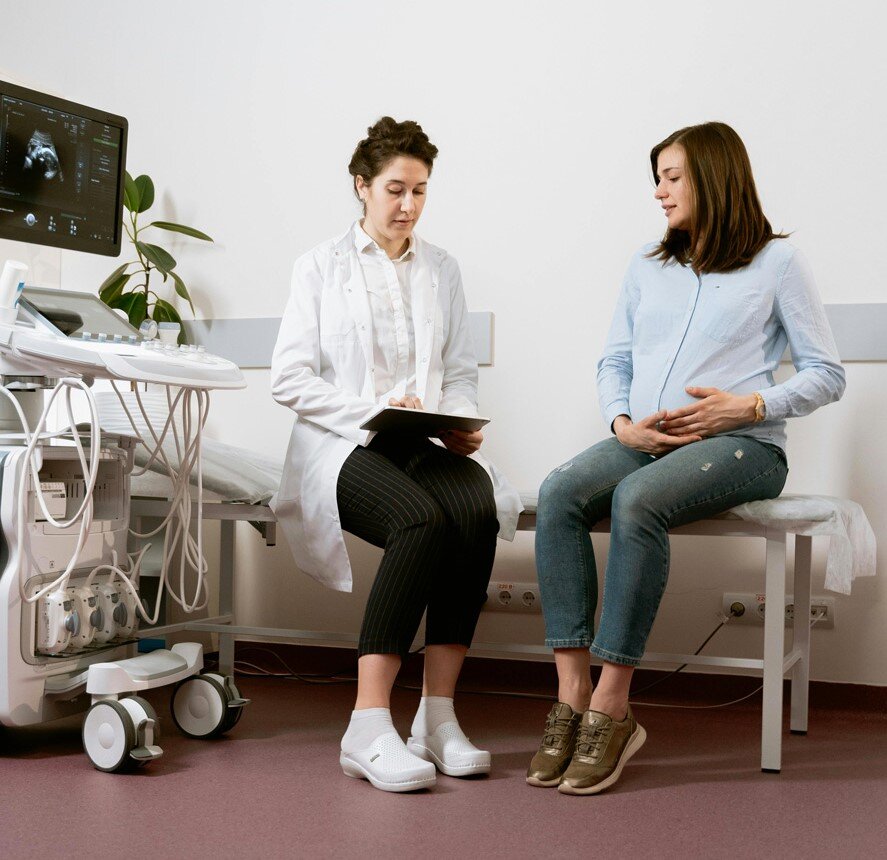Consumer perspective
— Column
From Silence to Solutions:
How Effective Communication Empowers Women’s Health
KEYWORDS
Health Communication
Framing
Messaging
Behavioral Science
Gender Health Gap
DEI
Immune health
Immune health
Women’s health is a complicated space, influenced by diverse and interrelated factors from biological and psychological aspects to societal and cultural norms. Because of the complexity within this space, communicating information accurately and clearly is a challenge. There is a limited amount of research on women’s health, and many of the headlines that circulate are overgeneralizations, misinterpretations or complete fallacies. Unfortunately, the inability to communicate effectively results in a lot of misguidance or confusion. Women deserve the space to express their concerns and receive clear, accurate, and contextualized information. Arming women with factual and appropriate information allows them to feel confident in making educated decisions about their body, and ultimately enhance their wellbeing and live healthier lives.
*The views and opinions expressed are solely those of the author and do not necessarily reflect the official policy or position of any affiliated organization, employer, or company.
Introduction
Making health-related decisions is one of the most intimidating and important aspects of living a fulfilling life. The health industry is a multifaceted, intricate space which can be overwhelming to navigate fact versus fallacy. Women’s health particularly suffers from ambiguity and overgeneralizations because of the limited number of studies dedicated to this half the population. Further, cultural, societal and social norms all contribute to the waning pressure women experience around health decisions. The stigma around how women treat their bodies is exacerbated by the way that health and wellness positions information. A space that requires comprehensive and individualized attention is overwhelmed with information taken out of context and fear mongering tactics pushing women to get a procedure, purchase an ointment or subscribe to a certain lifestyle. The accuracy and clarity in reporting information is pivotal in guiding consumers to understand every option they have. All consumers, including women, deserve clear and simple information to make informed decisions about their health.
The Impact of Gender Bias
The stigma surrounding women’s health often results in marginalized groups being shamed into silence. Gender bias, or prejudice of one gender over another, causes health disparities and furthers inequity. Biases exist for both sex and gender independently, but many of these biases overlap. Gender bias extends not only to those with female genitalia, but to all who are perceived as feminine. Unfortunately, gender bias often results in an increase in unhealthy outcomes.
Due to the lack of inclusivity in medical research, there is limited understanding of the health of female and intersex people. These gaps of knowledge in the medical system perpetuates misunderstanding between healthcare communicators and those seeking answers. Further, there is an inherent scarcity mindset because research is limited. Part of empathizing with women trying to navigate making health decisions is acknowledging the limited resources, while still providing an individualized conversation about how to best move forward. Too often women’s health is considered taboo, resulting in women downplaying pain out of fear of being labeled “hysterical” or “dramatic.” Symptoms reported by women around all types of medical concerns have been wrongly deemed exaggerated or entirely made-up. The lack of compassion surrounding these valid and real medical concerns endangers lives and wellbeing.
It is critical for women to have a safe and empathetic space to learn about their bodies, while simultaneously having the confidence to voice how they are feeling. Communication works both ways. Giving women the space to share their lived experiences is just as important as translating medical jargon into something that is palatable.
The Media, Misinformation and Menstruating
Medical myths and misinformation only continue to be perpetuated due to baseless or misinterpreted ideas that go viral on social media. Women are bombarded with gendered ideologies about how to make healthy choices. Yet, finding trustworthy sources for medical council only becomes more and more challenging as the internet, social media, and even well-intentioned friends or family members spread inaccuracies. The mass amount of conflicting opinions being shared can easily cloud judgment or confuse consumers trying to make an appropriate decision about their health.
Women’s health research and product development is historically underfunded and understudied. Recently, a study evaluating tampons found small amounts of hard metals, including lead and arsenic (1). This study went viral, with news outlets, social media posts, and even memes all expressing major concern over the findings. Because the alarming headlines were blasted all over the internet, many consumers experienced availability bias, or emphasized this one study because it was freshest in their memory. The response caused many consumers to panic, sparking a debate about if menstruators should dispose of their unused tampons and resort to using other types of menstrual products. This study served as a humbling reminder that women’s health needs more attention and more studies like this need to be conducted. However, the lack of context in the messaging instilled fear in consumers. According to Dr. Jennifer Lincoln, OBGYN, reading the study would reveal that the amount of lead discovered was “very small, and far lower than what is considered concerning in our food or water.” Arming consumers with relevant, clear context puts the findings into perspective and gives power back to the consumer to determine what is right for them.

The Power of Framing
From social media posts to news highlights to YouTube ads, there is no way to avoid health-related messages. Message framing is a health communication technique that impacts how customers react not only by the content presented in the message, but how the information is presented (2). These messages are crafted to focus on potential health outcomes to sway customers to either do something or buy a product. The wording, emphasis, and references points within the messages all impact intention and behavior. Loss framing emphasizes negative consequences of unhealthy behaviors, like decreased quality of life or early mortality. Conversely, gain framed messages only focus on desired benefits like being strong and independent. The way that information in women’s health is framed can impair decision making by overvaluing how something is being said.
When looking into the messaging surrounding women’s health, loss framing dominates. The media, government and pharmaceutical industry all contribute to the narrative surrounding women’s bodies, which often highlights negative symptoms. Menopause ads are a prime example of women’s health concerns being commercialized in ways that catastrophize the experience (3). Rather than promoting how menopause is a natural part of aging, shame around symptoms like hot flashes and irritability are at the forefront of the messaging. By only referencing deterrents and debilitating symptoms, it reinforces the stigma around an aging female body. Loss-framed messages have been cited to increase anxiety without significantly impacting behavior change (2). This suggests that the negative emotions loss-framing evokes does not create motivation for change - it is just a scare tactic. For women to make informed decisions about their bodies, it is critical that the framing does not distract from the facts. Health communications should consider how the messaging is framed in order to evaluate what is grabbing attention compared to what information is critical to understand.

Conclusion
Effective communication builds confidence in any patient to feel entitled to make health decisions that are best for them. Women’s health will always have more questions than answers, yet clear and simple information can empower women in their health decisions. While there is no magic bullet to cure misinformation or systemic oppression, using strategic messaging or communication strategies can alleviate some of the pressure in a scary or intimidating situation into something manageable. Those communicating to the public are responsible for ensuring their message is direct and understandable to all those who read it, regardless of sex. A behaviorally targeted and proactive approach via intentional messaging can foster healthier lives and stronger communities.
Parents understand that the maintenance of their child’s health and wellness is their responsibility; however, many parents face various challenges when trying to do so. FMCG Gurus findings highlight that sugar is the ingredient that parents are most conscious about in food and drink products, with 74% of consumers concerned by sugar content in products. As children are typically drawn to sugary indulgences, parents are concerned by the link between obesity and diabetes and the hidden sugars in products.
Many parents believe that the complex labeling used by brands disguises ingredients. As a result, brands should ensure that nutritional labeling is made clear and simple for parents so that they are able to unpick the nutritional profile of products within seconds.
References and notes
- Shearston, J. A., Upson, K., Gordon, M., Do, V., Balac, O., Nguyen, K., ... & Schilling, K. (2024). Tampons as a source of exposure to metal (loid)s. Environment International, 108849. https://www.sciencedirect.com/science/article/pii/S0160412024004355
- Dorison, C. A., Lerner, J. S., Heller, B. H., Rothman, A. J., Kawachi, I. I., Wang, K., Rees, V. W., Gill, B. P., Gibbs, N., Ebersole, C. R., Vally, Z., Tajchman, Z., Zsido, A. N., Zrimsek, M., Chen, Z., Ziano, I., Gialitaki, Z., Ceary, C. D., Lin, Y., Kunisato, Y., … Coles, N. A. (2022). In COVID-19 Health Messaging, Loss Framing Increases Anxiety with Little-to-No Concomitant Benefits: Experimental Evidence from 84 Countries. Affective science, 3(3), 577–602. https://doi.org/10.1007/s42761-022-00128-3
- Thomas, S. L., Randle, M., White, S.L., (2024). (Re)framing menopause: a comprehensive public health approach. Health Promotion International, 39(3). https://pubmed.ncbi.nlm.nih.gov/38805675/

